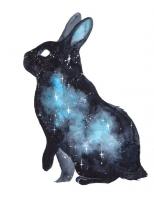| |
| RE: Why is the Therian/Kin community important to you? |
|
Posted in: Introduction to Therianthropy Posted by: Taguel - 2022-10-23 17:13
|
|

(2022-10-23 16:19)WolfThing Wrote: The fact that you commented on a post about why the community is important to you, then state that it isn't important to you, frankly proves that is is important to you...don't you think? I stuggle to understand bringing drama to a thread like this, but it does make me smile seeing you contradict yourself. Because you want to see a change you feel is important. I'm glad because that means some kinda way you care.
I was not attempting to bring drama into this thread. I was trying to make my voice heard because I have stated on many occasions that I don't feel like my voice is heard. If you are interpreting it as me attempting drama, then I will need to rethink my words and perceived tone of my post. I think it would be wise for your to rethink your tone as well because your reply comes off as very patronizing and condescending. The way you are talking to me is pretty much a text book example of why I feel like I don't belong here. You are talking to me like I am naïve and ignorant and I am not sure why. I understand that tone is often misconstrued over text though.
Quote:What will YOU do to see the changes you wish? If you continue to openly share your arguments, experiences and perspectives without being swayed by opposition you may receive the community as a whole can eventually understand better, and as a result change. But sitting and judging the way predator type therians nmay naturally exist does nothing for that change.
What do you suggest I do? If I share my opinion and viewpoint, I get replies like this telling me that I am wrong and trying to act as though the other person knows my thoughts and feelings more than I do. After a while, you start to learn that people either don't value your opinion or they think they know better and talk over you and tell you you're wrong. I don't feel the need to fight with people online over whether or not my viewpoints about my experience are correct.
Your response was basically a perfect example of why I have retreated greatly from this community. You listened to nothing I said and instead tried to act like you knew better than I do and basically put a majority of the blame on my shoulders for not wanting to interact with people who don't listen to me, talk over me, and clearly do not take me or my thoughts seriously because they think they know better.
Maybe it is a trait of being a prey kin-type, but I keep getting negative reactions and outcomes to my attempts to socialize with carnivores, I am just going to avoid them. The therian community is important to you, but in your words, what will YOU do to make it welcoming and safe to ALL therians, not just wolves and carnivores? To me, a prey type surrounded by predators, the therian community is almost completely tailored and suited for predator types. Even the language that is used is carnivore focused (howls, packs, etc.).
I respect that the therian community is important to you and I am happy it is. At the same time, making a thread like this opens the field up for people who have a differing opinion than you to enter the conversation. If that is not your intention, then you are looking only to communicate with people who share your viewpoint and then we are circling right back to my original statement of how I do not feel heard or have respected viewpoints.
|
|
| RE: Why is the Therian/Kin community important to you? |
|
Posted in: Introduction to Therianthropy Posted by: Wolf - 2022-10-23 16:19
|
|

(2022-10-23 0:48)Taguel Wrote: This is probably going to sound callous, but as far as the community goes, I can take it or leave it. There are people in the community who I adore and feel a kinship with and others I don't.
As a rabbit and herbivore, I don't feel like there is really a place for me in the community. I think herbivores see therianthropy differently than carnivores and omnivores. From what I have seen, carnivores tend to lack a level of empathy that I require in my social relationships. If I had a dollar for every time someone from this site has talked to me like I was "dinner" or potential food to them, I could probably... idk, buy myself lunch or something.
I've stated this to some people, but I do not feel a strong desire to meet other therians irl. Even if there was a howl in my area, I likely would not go. One, because I am horribly busy and emotionally exhausted and two, because I don't think I would enjoy myself or feel comfortable. I don't feel listened to or taken seriously by some in the community. I have had my personal expertise, things that I have studied and earned a degree in, be ignored or contradicted. I find that I will be understanding and even employ a suspension of belief for the thoughts and ideals of others out of respect to them, but that same courtesy is not always returned.
There is such a strong desire in this community to be the "alpha" or the most knowledgeable/enlightened/strongest/best and while I know that is a biological drive, especially for many feral animals, it is not something I enjoy. In fact, it is something that is a major social turn off for me. I am not a competitive person and I don't really have any interest in taking part in displays of dominance/power. I have no illusions of who I am and my place within general society, as well as my place in the therian community.
I think for a society that literally requires people to be open-minded about identity, the therian community is quite often not only closed-minded, but stubborn and myopic. So many people cannot see past their own experience or personal view and it leads to others feeling like they are not good enough or not being heard.
So that being said, the community is not what is important to me. My friends that I have made through it are important to me. I stay because I hope things will get better, but, like I said, I don't really feel like I truly belong here. My experience, the experience of a rabbit/herbivore/prey therian is not represented well in the community. It leads me to do want to interact with the mass majority of the community. I'd rather just cut myself off and be alone. I don't feel like I belong in human or therian society, so why force myself to try to fit into two societies where I don't feel comfortable?
I hope this will change, but I don't think it will.
The fact that you commented on a post about why the community is important to you, then state that it isn't important to you, frankly proves that is is important to you...don't you think? I stuggle to understand bringing drama to a thread like this, but it does make me smile seeing you contradict yourself. Because you want to see a change you feel is important. I'm glad because that means some kinda way you care. What will YOU do to see the changes you wish? If you continue to openly share your arguments, experiences and perspectives without being swayed by opposition you may receive the community as a whole can eventually understand better, and as a result change. But sitting and judging the way predator type therians nmay naturally exist does nothing for that change.
|
|
| RE: Why is the Therian/Kin community important to you? |
|
Posted in: Introduction to Therianthropy Posted by: Taguel - 2022-10-23 0:48
|
|
 This is probably going to sound callous, but as far as the community goes, I can take it or leave it. There are people in the community who I adore and feel a kinship with and others I don't.
This is probably going to sound callous, but as far as the community goes, I can take it or leave it. There are people in the community who I adore and feel a kinship with and others I don't.
As a rabbit and herbivore, I don't feel like there is really a place for me in the community. I think herbivores see therianthropy differently than carnivores and omnivores. From what I have seen, carnivores tend to lack a level of empathy that I require in my social relationships. If I had a dollar for every time someone from this site has talked to me like I was "dinner" or potential food to them, I could probably... idk, buy myself lunch or something.
I've stated this to some people, but I do not feel a strong desire to meet other therians irl. Even if there was a howl in my area, I likely would not go. One, because I am horribly busy and emotionally exhausted and two, because I don't think I would enjoy myself or feel comfortable. I don't feel listened to or taken seriously by some in the community. I have had my personal expertise, things that I have studied and earned a degree in, be ignored or contradicted. I find that I will be understanding and even employ a suspension of belief for the thoughts and ideals of others out of respect to them, but that same courtesy is not always returned.
There is such a strong desire in this community to be the "alpha" or the most knowledgeable/enlightened/strongest/best and while I know that is a biological drive, especially for many feral animals, it is not something I enjoy. In fact, it is something that is a major social turn off for me. I am not a competitive person and I don't really have any interest in taking part in displays of dominance/power. I have no illusions of who I am and my place within general society, as well as my place in the therian community.
I think for a society that literally requires people to be open-minded about identity, the therian community is quite often not only closed-minded, but stubborn and myopic. So many people cannot see past their own experience or personal view and it leads to others feeling like they are not good enough or not being heard.
So that being said, the community is not what is important to me. My friends that I have made through it are important to me. I stay because I hope things will get better, but, like I said, I don't really feel like I truly belong here. My experience, the experience of a rabbit/herbivore/prey therian is not represented well in the community. It leads me to do want to interact with the mass majority of the community. I'd rather just cut myself off and be alone. I don't feel like I belong in human or therian society, so why force myself to try to fit into two societies where I don't feel comfortable?
I hope this will change, but I don't think it will.
|
|
| RE: Why is the Therian/Kin community important to you? |
|
Posted in: Introduction to Therianthropy Posted by: VultureScale - 2022-10-17 14:04
|
|
 I just remembered there is something else that i would like to mention
I just remembered there is something else that i would like to mention
This community has helped me a few times simply by existing when i felt rather lost or disconnected from the world around me, especially when therianthropy was tied into it. Everytime i thought i was taking things too far, or straight up going crazy because of my non-humanity, the existence of the therian community in itself was there to show me that it's okay to feel certain emotions, even if they're abnormal to an average person, because i'm not the only one experiencing them.
|
|
| RE: Why is the Therian/Kin community important to you? |
|
Posted in: Introduction to Therianthropy Posted by: Lupus Ferox - 2022-10-17 12:18
|
|
 I just like to be taken by surprise by things we have in common. By reading through others' posts, journals, etc. I often see that they do it or think about it in a similar way. Oddities I have, are explained to me as to why I have them or what those thoughts might stand for. Being around has taught me several things about myself, some for good, others for bad. It's not all that positive, but at least most of you don't vibe to me as judgmental beings. Which is okay. I also like to be taken by surprise on the level of interactivity. Even though I don't mention this enough, the amount of friendly users here, really do their best to listen and to teach me how to work around several of my issues. Each time, when leaving, I notice how difficult it is to fight the urge to get back here. This community, to me, means someone has got my back when I'm down. Without it, I feel that something is missing, almost as if I act against my nature. It's above all, a community that serves to me as a sort of a group therapy session where each user struggles in their own way.
I just like to be taken by surprise by things we have in common. By reading through others' posts, journals, etc. I often see that they do it or think about it in a similar way. Oddities I have, are explained to me as to why I have them or what those thoughts might stand for. Being around has taught me several things about myself, some for good, others for bad. It's not all that positive, but at least most of you don't vibe to me as judgmental beings. Which is okay. I also like to be taken by surprise on the level of interactivity. Even though I don't mention this enough, the amount of friendly users here, really do their best to listen and to teach me how to work around several of my issues. Each time, when leaving, I notice how difficult it is to fight the urge to get back here. This community, to me, means someone has got my back when I'm down. Without it, I feel that something is missing, almost as if I act against my nature. It's above all, a community that serves to me as a sort of a group therapy session where each user struggles in their own way.
I don't wanna go. For that, I value the input by its people too much.
|
|
| RE: Why is the Therian/Kin community important to you? |
|
Posted in: Introduction to Therianthropy Posted by: Tdae - 2022-10-15 17:25
|
|
 I've been here awhile and still feel like a wild dog lurking around outside the camp. I don't think I'm therian or otherkin, but this community is important to me because it is a *community* of peaceful, friendly people and we have some important things in common. It helps me work things out internally and be more open-minded.
I've been here awhile and still feel like a wild dog lurking around outside the camp. I don't think I'm therian or otherkin, but this community is important to me because it is a *community* of peaceful, friendly people and we have some important things in common. It helps me work things out internally and be more open-minded.
|
|
| RE: Why is the Therian/Kin community important to you? |
|
Posted in: Introduction to Therianthropy Posted by: VultureScale - 2022-10-10 14:21
|
|
 The straight-to-the-point, in-depth discussions.
The straight-to-the-point, in-depth discussions.
I don't like chatting or small talk on absolutely nothing. Both in person and on the internet. Making up a sentence takes me alot of muling over certain words, how they should be alligned, if the're properly used in that sentence etc. etc. and i believe that such a simple action that lasts 10 seconds isn't worth that much hassle. From what i've seen, the therian community isn't based on these little sentence exchanges, but on in-depth replies that actually have fulfilling answers instead of those that only raise more questions that can also be answered with very few, meaningless words.
|
|
| RE: Why is the Therian/Kin community important to you? |
|
Posted in: Introduction to Therianthropy Posted by: CrocutaAbIntra - 2022-10-10 9:35
|
|
 For me it is exchanging thoughts and being able to relate to (shared) experiences which I cannot find IRL.
For me it is exchanging thoughts and being able to relate to (shared) experiences which I cannot find IRL.
That said my own interaction with the therian community is 100 percent an online experience due to health issues and about 80 percent of it is participating on this forum.
There's also the matter that I always stand out amongst even those that stand out...if that makes sense. I'm just too self-aware of my 'otherness' even amongst those that share this otherness and online communication feels a lot safer I guess.
So I go through life on my own and when therianthropy hits me in the face I've got this and other online places to hang out in and know that there are others like me. I guess that's also why I tend to drop offline for periods of time and then swing back in in full force.
|
|
|







![[-]](images/collapse.gif)
